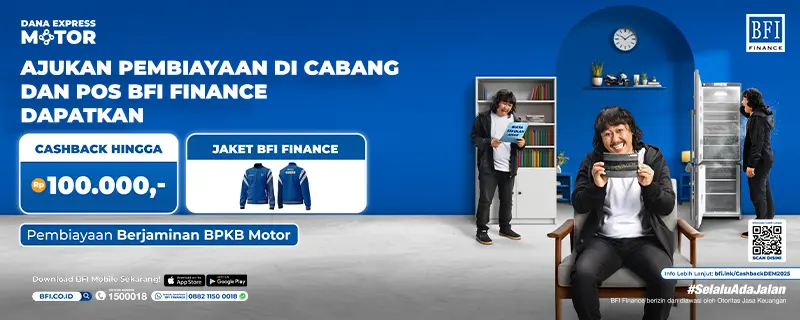Indonesia, like many countries around the world, faces significant health challenges. One of the primary health concerns is stroke. According to data from the Ministry of Health of the Republic of Indonesia, stroke is the number one cause of death in Indonesia. However, ironically, many people are still unaware of the symptoms of stroke and the actions to take when experiencing it.
Stroke is a serious condition that occurs when the blood supply to the brain is disrupted, either due to a blocked blood vessel or bleeding. This condition requires immediate treatment because brain damage can be permanent if not addressed promptly. Therefore, it's crucial to recognize stroke symptoms early and know the appropriate actions to take. In this article, we will further discuss stroke, its symptoms, risk factors, as well as prevention and proper management.
1. Causes of Stroke
Before delving into stroke symptoms, let's understand what stroke is and what causes it. Stroke occurs when the blood supply to a part of the brain is interrupted. This can happen for two main reasons:
1.1 Ischemic Stroke
This is the most common type of stroke and occurs when there is a blockage or obstruction in the blood vessels leading to the brain. This can be caused by blood clots or plaque in the blood vessels.
Also Read: Health Investment Is Just as Important as Money – How to Build It?
1.2 Hemorrhagic Stroke
This occurs when there is bleeding in the brain. It can be caused by the rupture of blood vessels or an aneurysm (a weakened blood vessel prone to rupture).
In both cases, damage to brain cells occurs due to a lack of blood and oxygen supply. If the blood supply to the brain is disrupted for too long, brain damage can be permanent and can result in serious consequences such as the loss of speech, mobility, or even death.
2. Stroke Symptoms
It is essential to recognize stroke symptoms early because immediate action can save lives and reduce the risk of permanent brain damage. Stroke symptoms can vary depending on the type of stroke and the part of the brain affected. Some common stroke symptoms to be aware of include:
2.1 Loss of Consciousness or Fainting
This can occur suddenly and is often a symptom of bleeding in the brain.
2.2 Weakness or Numbness
Loss of strength or numbness in the face, arm, or leg, especially if it occurs on one side of the body.
2.3 Difficulty Speaking or Understanding
Difficulty in speaking or understanding other people's speech.
2.4 Vision Disturbances
Partial loss of vision or difficulty in seeing with one or both eyes.
2.5 Severe Dizziness or Loss of Balance
Severe dizziness or difficulty in maintaining balance.
2.6 Severe Headache
Sudden and severe headache.
2.7 Difficulty Walking
Difficulty in walking, confusion, or poor coordination.
2.8 Difficulty Swallowing
Difficulty in swallowing food or beverages.
2.9 Sudden Changes in Consciousness and Behavior
Sudden changes in consciousness, such as confusion or difficulty waking up from sleep.
2.10 Fainting or Coma
Loss of consciousness or entering a coma state.
Also Read: Experiencing Layoff? Don't Despair! Here's What You Can Do
In many cases, stroke symptoms come on suddenly and are often very severe. However, some individuals may experience symptoms that develop gradually. If you or someone around you experiences these symptoms, seek immediate medical help. Time is of the essence in stroke management.
3. Risk Factors for Stroke
There are several risk factors that can increase the likelihood of someone experiencing a stroke. Identifying and managing these risk factors can help reduce the risk of stroke. Some major risk factors include:
3.1 Hypertension (High Blood Pressure)
High blood pressure is a major risk factor for stroke. Regular blood pressure monitoring is crucial for stroke prevention.
3.2 Smoking
Smoking can damage blood vessels and increase the risk of stroke.
3.3 Diabetes
Individuals with diabetes have a higher risk of stroke. Managing blood sugar is key to reducing this risk.
3.4 Obesity
Excess weight or obesity can raise blood pressure, cholesterol levels, and the risk of stroke.
3.5 Family History
If there is a family history of stroke, your risk is also elevated.
3.6 Age
The risk of stroke increases with age, with those over 55 years being at higher risk.
3.7 Gender
Women have a higher risk of stroke than men, mainly due to their longer life expectancy.
3.8 Atrial Fibrillation History
Atrial fibrillation is a type of heart arrhythmia that can increase the risk of stroke due to blood clot formation.
3.9 Blood Clotting Disorders
Blood clotting disorders can increase the risk of clot formation leading to a stroke.
3.10 Excessive Alcohol Consumption
Excessive alcohol intake can raise blood pressure and the risk of stroke.
4. Stroke Prevention
When understanding stroke symptoms and risk factors, prevention measures become crucial in reducing the risk. Some preventive measures to take include:
4.1 Blood Pressure Control
Monitoring and managing blood pressure regularly is vital. Blood pressure management can significantly reduce the risk of stroke.
4.2 Smoking Cessation
Quitting smoking is a crucial step in reducing the risk of stroke.
4.3 Diabetes Management
If you have diabetes, ensure that you maintain blood sugar within a healthy range.
4.4 Healthy Eating Habits
A balanced diet rich in fruits, vegetables, and low-fat food sources is essential.
4.5 Physical Activity
Regular exercise helps maintain a healthy weight and blood pressure.
4.6 Limit Alcohol Consumption
Alcohol intake should follow health guidelines.
4.7 Reduce Salt Intake
Excessive salt consumption can increase blood pressure. Limit your salt intake.
4.8 Weight Management
Maintain a healthy weight through an active lifestyle and balanced diet.
4.9 Regular Checkups
Regular checkups with your doctor are an effective way to detect and manage risk factors like high blood pressure and diabetes.
4.10 Consult a Doctor
If you have high-risk factors or a family history that may increase the risk of stroke, consult your doctor for specific recommendations.
Also Read: Fighting as a Hobby with Your Partner? Not Necessarily Incompatible, It Could Mean...
5. Emergency Actions for Stroke
If you or someone around you experiences stroke symptoms, taking immediate action is essential. Time is of the essence in stroke management. Steps to take when dealing with a stroke case include:
5.1 Call an Ambulance
Do not attempt to drive yourself or seek non-emergency medical assistance.
5.2 Note the Time
Record the time when the first stroke symptoms appeared. This information will help the medical team determine the appropriate treatment.
5.3 Do Not Feed or Give Water
Avoid feeding or providing water to someone experiencing stroke symptoms, as there is a risk of choking.
5.4 Ensure an Open Airway
Ensure that the airway of the person experiencing a stroke is not blocked. Remove tight clothing or collars to facilitate breathing.
5.5 Monitor Consciousness
Monitor the person's consciousness. Try to keep them calm and supported.
5.6 Do Not Administer Blood Thinners
Do not administer blood-thinning medications like aspirin unless advised by the medical team.
Stroke is a life-threatening condition, but it can be prevented and managed if we recognize symptoms and risk factors early. Brain health is a valuable asset that should be well-maintained. Implementing prevention measures, recognizing symptoms, and taking immediate action in cases of stroke are key steps that can save lives and reduce the risk of permanent brain damage. Always remember, health is the most precious treasure.
BFI Finance is a company that provides multi-purpose loans with guarantees for motorbike bpkb, car bpkb, and house or shophouse certificates







